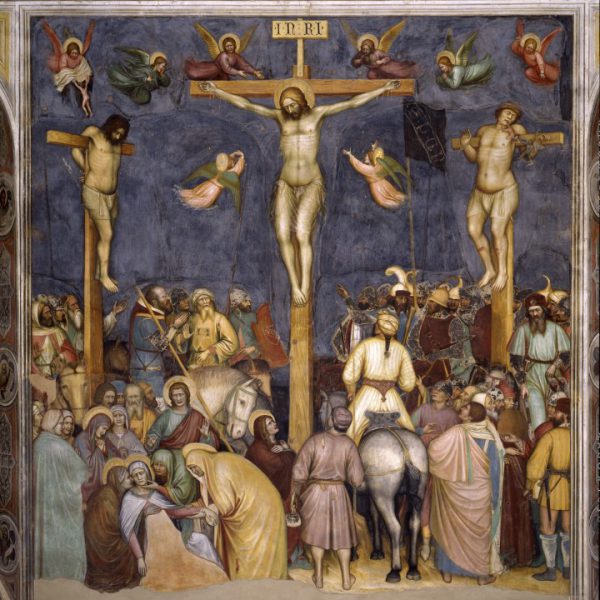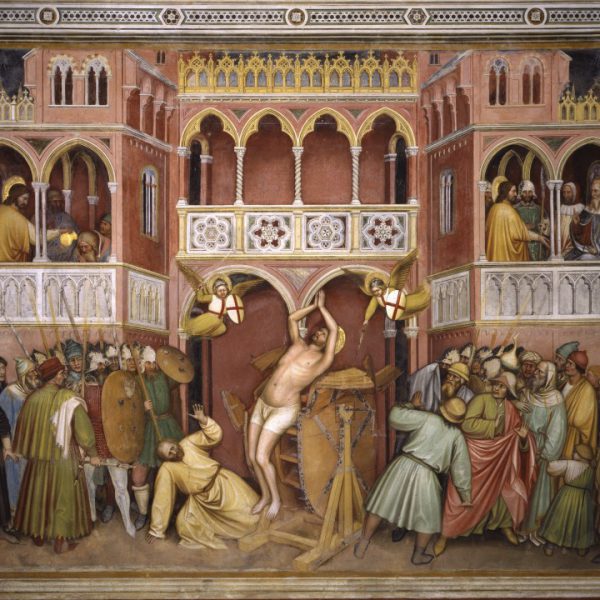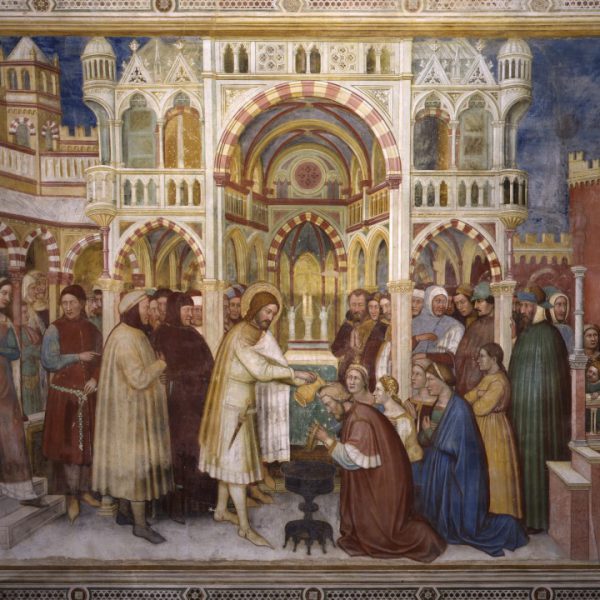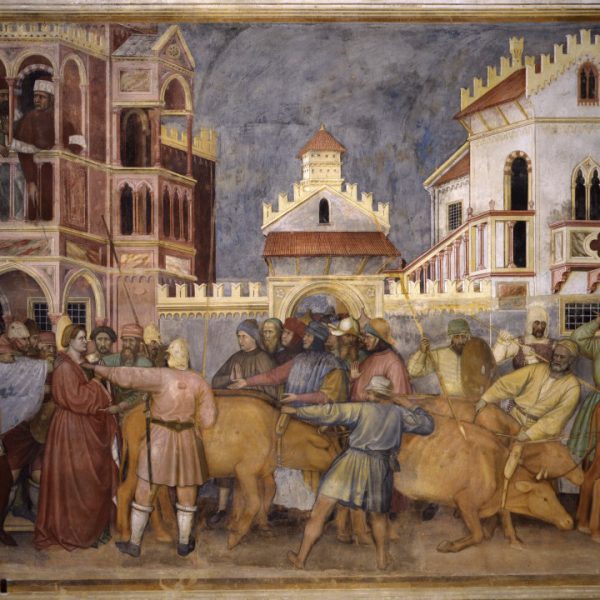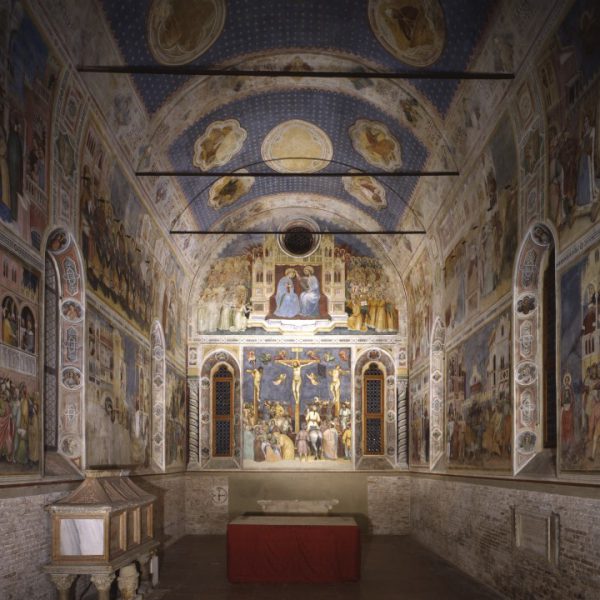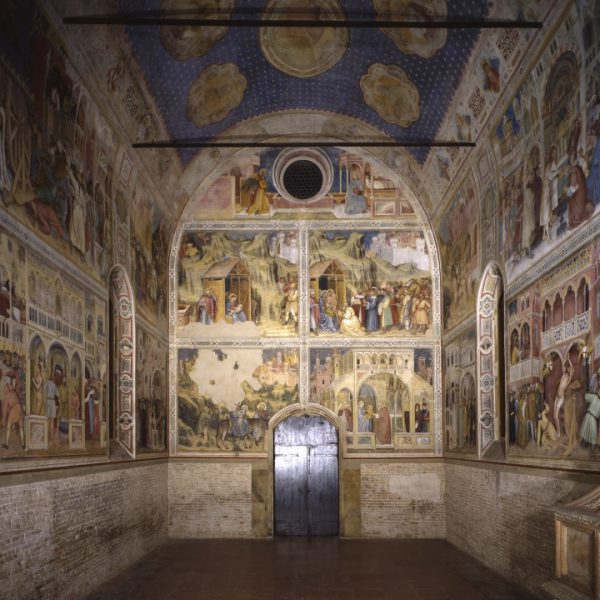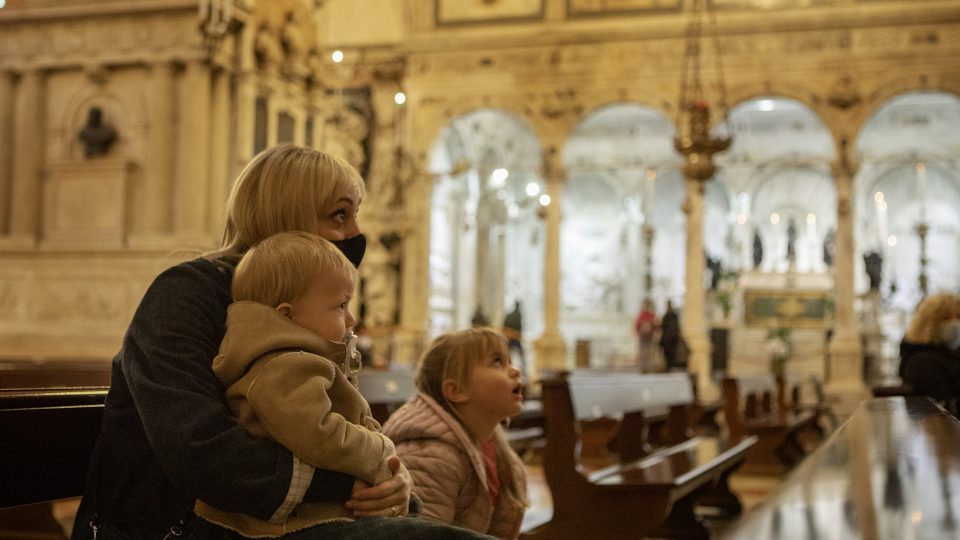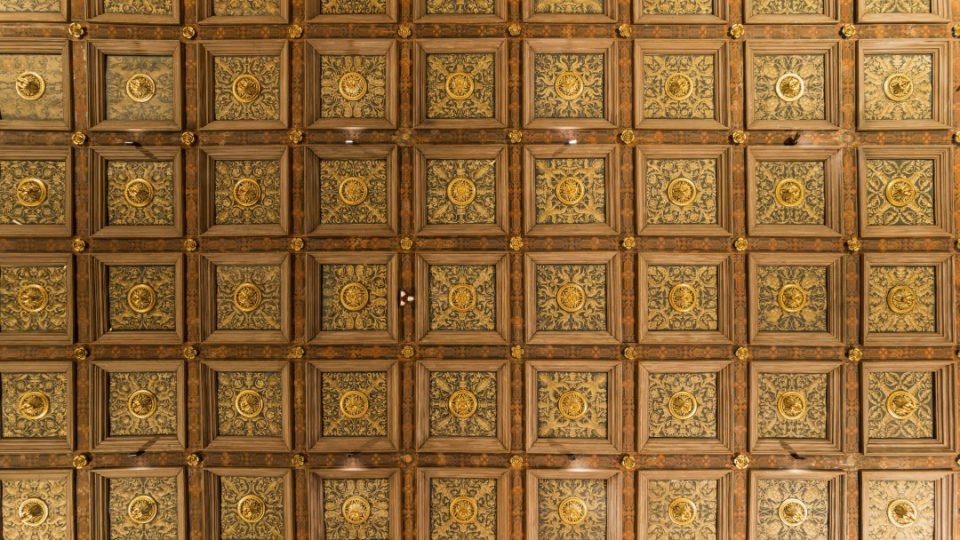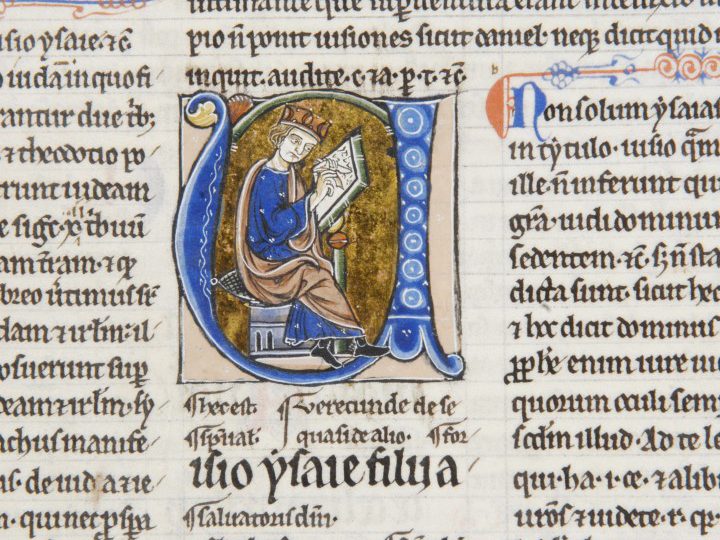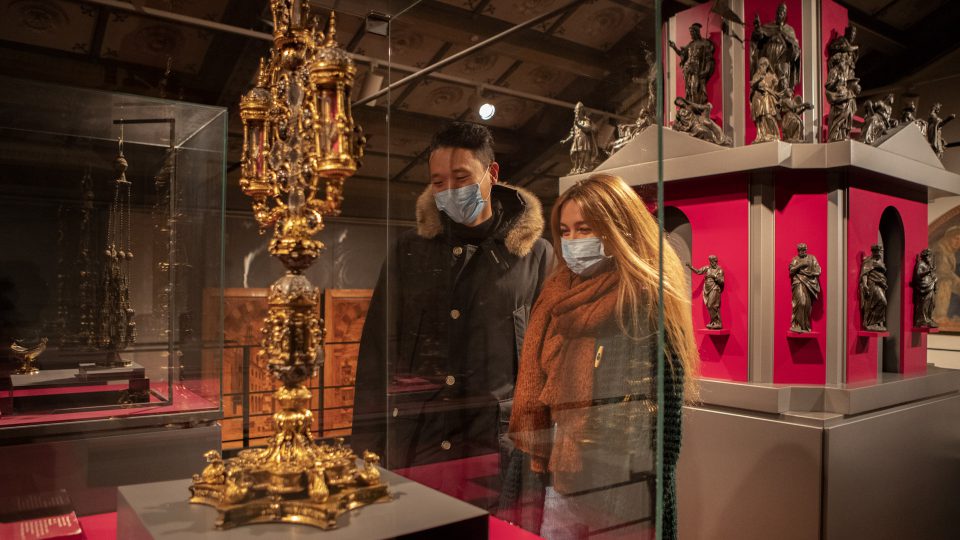The building of the oratory of San Giorgio, overlooking the churchyard of the basilica, started in 1377 at the wish of Raimondino Lupi, a member of a collateral branch of the Lupi di Soragna. It was meant to be a funerary chapel. A few years earlier, Bonifacio – cousin of Raimondino and eminent personality of the important family linked to the entourage of the Da Carrara, lords of Padua in the 14th century – had supported the building of the chapel of San Giacomo inside the basilica. The architectural and sculptural part of the chapel was commissioned to Andriolo de Santi. These two monumental projects show the devotion to the Saint and the bond this powerful clan held with the Franciscan order, as well as the desire to take root in Padua city center and assert their role within the city’s elite. The pictorial decoration of the Oratory, completed in 1384, was entrusted to Altichiero da Zevio, who had previously been commissioned the decoration of the chapel of San Giacomo (completed in 1379). After being brought back to light in 1837, the frescoes underwent a major restoration between 1995 and 1997. The pictorial cycle has an unavoidable point of reference in Giotto’s Scrovegni chapel. In fact, it culminates in a similar starry sky on which clypei depicting sacred characters stand out. The counter-façade depicts episodes from the life of Christ. These paintings face those of the Crucifixion and the Coronation of the Virgin, which are found on the back wall. On the long walls are episodes from the lives of Saint George, Saint Catherine of Alexandria, and Saint Lucy. The left wall is mostly occupied by a votive scene in which Rinaldino Lupi and his wife Matilde – the client’s parents – followed by other members of the family in military robes, including Raimondino himself, kneel to the Virgin, introduced by St. George and in the presence of numerous saints. At the center of the oratory stood the complex architectural-sculptural structure of the founder’s funeral ark, the stone tomb of which is still preserved. Today, the precious frescoes come back to life thanks to the installation of an innovative lighting system, promoted by the Veneranda Arca di S. Antonio with the support of the Cassa di Risparmio di Padova and Rovigo Foundation and iGuzzini illuminazione Spa, a leading company specializing in architectural lighting, that also oversaw the installation under the direction of the architect Antonio Susani. This project allowed the Oratory of San Giorgio to be the first UNESCO candidate site to adopt a lighting system inspired by that of the Scrovegni chapel.



